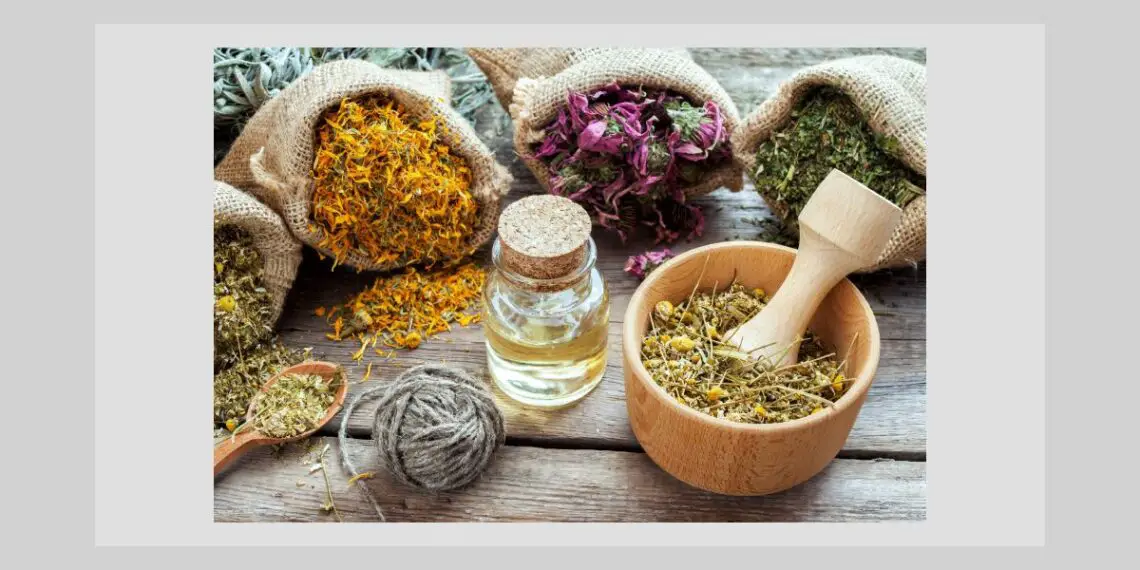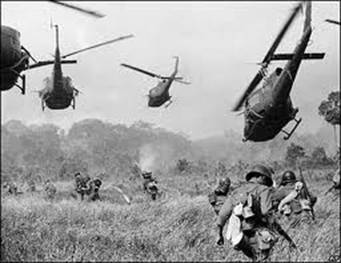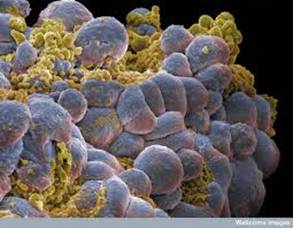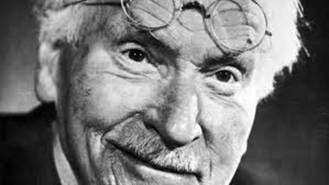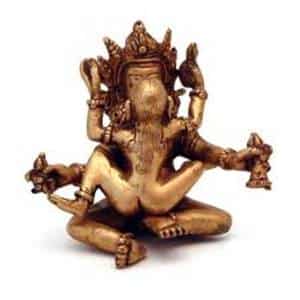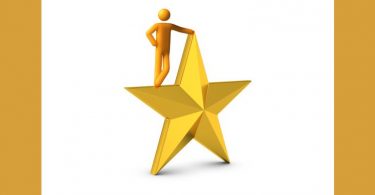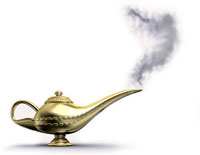In this essay (originally presented on the 25th birthday of the School of Homeopathy seven years ago)some common themes in four provings are discussed that may point towards the unique quality of human consciousness.
Introduction and general overview
Humans are the most successful animals, being top predators that kill for food as well as to secure primacy of position. Although other ways of being are accessible to us, and may be the custom of those who practice harmlessness, violent movies, gaming and console images of Homo sapiens indicate that often lower drives (basic and bestial impulses) are uppermost in our culture. How we play and entertain ourselves is indicative of where we are, and it seems clear that humans are capable of doing anything to survive, for revenge, and to achieve and maintain top position.
When we pipe this violence into the minds of children via TV and computer games, we are surely courting trouble! Human survival capability, which is linked to mental development, boils down to learning skills at multiple levels that are then absorbed in the collective psyche. These capabilities are also communicated within the culture as stories, philosophy, science, art and artifacts. In our post-modern era, as we face yet more social unrest, political instability and currently the aftermath of economic melt-down, a number of commentators amongst us seem to be increasingly committed to chaos theory, where the unexpected is seen to drive outcomes.
Different races have their own myths, and include those that are echoes of their collective past when distant ancestors began to differentiate as humans. Retaining a myth of genesis, of their Gods and beliefs, as Joseph Campbell has so eloquently described, helps to insure social integrity and psychic stability. The argument goes that should humans lose this thread to their past, then their ability to hang on in times of change may be compromised. Of course, change, as epitomized by uncertainty, is necessary grist for the evolutionary mill, where successful adaptations to an altering environment provides the cutting edge for survival. In terms of the psyche the same is true. But the new adaptation in order to integrate must relate to the older form. Without this capacity for integration social cohesion is lost, action becoming based upon purely selfish survival drives. This seems to be evidenced today, where as suggested in the paragraph above, social cohesion is on a landslide into chaos. As this occurs, we may become increasingly pushed into acting from basic, animalistic instincts where dog eats dog.
That which makes us unique within our animal family, is our enhanced capacity for investigation, for finding solutions to problems, inventing things, and folding our consciousness back upon itself, to reflect upon our inner nature, finding the source there, and then recognizing this reflection in outer nature. This gives us a power with which to exercise our human responsibility and to change the course of our future. But humans are often caught between personal creativity (the experimental ‘wild side’ where chaos above order may hold sway) and the dictates of society’s moral codes that may inhibit this thrust for self-expression. This brings us to religion.
- G. Jung understood that psychotherapy had emerged in the 19th century because religious systems had begun to fail. He believed that human beings cannot live with meaninglessness in life. Religious traditions provide frameworks within which meaning can be approached in an experiential and practical manner. Jung wrote, “The Christ-symbol is of the greatest importance for psychology insofar as it is perhaps the most highly developed and differentiated symbol of the self, apart from the figure of the Buddha.” He explained that Christ and the Buddha had both experienced their own confrontations with the unconscious respectively in the account of the temptations of Jesus and the Mara episode in the Buddha’s story. They are experiences that individuals shouldn’t seek to imitate, but might expect and follow.
What I have alluded to so far is a rag-bag of social and ontological dilemmas to which no glib solution can be offered. However, our understanding of human themes, and spiritual themes, may be enhanced through examining a few human sourced remedies that have been proved recently: Lac humanum, AIDS nosode, Mother of Auroville, and the homeopath’s old favorite, Carcinosin.
Lac humanum
To begin our journey of discovery of human themes let us review the key psychological issues that arose during the many provings and subsequent cures all over the world with various mother’s milk potencies carried out by Rajan Sankaran and Divya Chhabra. (Another proving of human milk, Lac maternum has also been carried out, with similar results, however, for brevity, we will focus upon the well defined psychological state of Lac humanum).
The main concept concerns the development of ego – that of the baby weaning and gradually developing a distinct ‘I’ as a separate consciousness. This develops into a dipole of selfishness (I want) and altruism (I give), and eventually gives rise to the everlasting ontological question, am I here for my own satisfaction, doing what I like to do vs. am I in relationship with others, guiding my actions according to their needs? The vector of selfishness leads to ‘outsider’ feelings of detachment, alienation and finally despair, while the vector of altruism (viewed through the lens of the self-reflective yet selfish ego) leads to feelings, typical of remedies from animal sources, of failure with self-loathing and revulsion where withdrawal is the best option. There are predominant sensations of disconnection, detachment, and spaciness, as in a drug-like state. The compensation that may develop can follow the vector of an iron self control, and taking on many duties of care rather like Carcinosin.
Divya Chabbra is reported as teaching Lac humanum thus: primarily there is the theme of being helpful to others so that you received acceptance and are not alone. The ‘I’ needs to be sacrificed for the good of the ‘we’. It is necessary to do things for others, obey the rules, and be sensitive to the opinions of others, but unfortunately, this also leads to feeling forced, treated like rubbish and ridiculed. The issue of having two wills is central to Lac humanum. Thus there is conflict between having both a spiritual and non-spiritual nature, a desire to work and a desire to go on a holiday, a desire to be an individual, yet part of a group. There is a lot of emphasis on one’s relatives and on being helpful to one’s friends, family, community and those less fortunate; what we might call humanitarian service.
Key concept: Am I a unique individual, doing what I want to do, or do I bow to the group, its beliefs and moral structures?
Carcinosin
Abstract from Signatures, Miasms, AIDS – by Misha Norland
Cancerous tumors are characterized by an over-abundant proliferation of cells of one type. Cancer cells are regressive, having reverted to a less differentiated state than normal cells. Within the tumor, each cell conforms to its neighbor like bricks in a wall. However, from the point of view of the organism as a whole, the cells are rebellious and unruly. There is an escalating struggle between the body, which wishes to maintain its integrity and proper functioning, and the tumor, which subverts.
Cancer cells are like a mono-culture. In a healthy organism, groups of differing cells cooperate together, while in cancerous tissue, the conformity of structure within the tumor allows no functional interfacing with surrounding tissues. Although it is genetically conforming (and can therefore bypass normal immune defense strategies), it is foreign (rebellious).
Miasmatically, Carcinosin stands midway between Sycosis and Syphilis. From a psychological standpoint, the Sycotic theme translates into striving to have more, do more and be more. Because of the conflict that arises between conscience and the Sycotic’s extravagant nature, they characteristically develop a deep sense of guilt and cover-up. Carcinosin symptoms which exemplify this include secretiveness and self-reproach. The Syphilitic miasm leads to the destructive expressions often exhibited by Carcinosin children and teenagers, such as rudeness and defiance. Carcinosin’s self-destructive impulses include picking at themselves, both physically in the form of self-harming, and mentally in the form of endlessly revisiting injustices, wrongs and slights, sleeplessness, fear of cancer, and fastidiousness. These concerns and habits may be kept under wraps. It is usual for patients requiring Carcinosin, should they be fastidious, to express this as a drive for matching things. In children, and atypically, in some adults, the other polarity may be seen (predominantly Syphilitic) – smashing things up and creating mayhem.
Carcinosin children and teenagers fall into two types: rebellious and conforming. The rebellious type shows anger at reprimand, defiance, obstinacy and love of travel – all reminiscent of Tuberculinum. These types may be passionate and given to temper tantrums when opposed. They have strong desire natures and often exhibit premature sexual interest. Both types typically have a strong reaction to rhythm and music. The conforming type of Carcinosin, faced with heavy demands from authority figures, makes huge efforts to do well. Correct performance is deemed imperative for success. Carcinosin is one of very few remedies in the rubric, “Long history of domination by others”. It is invaluable for children who cannot hold their own and are bullied at school. After bullying, they may develop physical symptoms. They are over-sensitive to taunts, rudeness and criticism, and take offence easily. However, these types do not become aggressive or answer back – they simply retreat and brood silently. In an attempt to fend off criticism before it is offered, they may develop perfectionism and neurotic fastidiousness. Carcinosin is well indicated in ailments of anticipation, typically sleeplessness before an event, and excessive anxiety before performance.
Key concept: I conform to the group’s expectations, I must be perfect, or I rebel.
AIDS Nosode proving of HIV positive blood.
Proving carried out by Misha Norland, the ‘story’ written by Peter Fraser.
(For detail please read Signatures, Miasms, AIDS by Misha Norland)
AIDS results in a failure of the immune system, our last line of defense against morbific influences. The skin, the mucous membranes and organs such as the liver and gut act as a physical barrier, but when they are breached, the immune system is the final dynamic boundary. The breaching, or rather the failure of barriers and boundaries is the central theme of the AIDS nosode.
AIDS is transmitted via blood, and usually sexually. Sex is about as close as our physical and emotional experience can get to dissolving the boundary that separates us from others, because penetration is a voluntary or involuntary breach of our personal boundary. By definition, other venereal diseases like gonorrhea and syphilis spread through sexual intercourse, and like AIDS, thrive in situations of sex with multiple partners. However, AIDS is unlike these other diseases in that it breaches the integrity of the center of the cell, the nucleus and its DNA.
AIDS and miasms
From the point of view of miasmatic analysis, Tuberculosis and AIDS are similar. AIDS patients commonly succumb to tuberculosis. Certainly both diseases are associated with youthful deaths – our talented rebels, writers and musicians, are whisked away in the full bloom of their creative output. Both diseases represent a marriage of Psora and Syphilis. In the case of tuberculosis, the homeland (Psora) has been destroyed (Syphilis). In the case of AIDS, the destruction (Syphilis) is of the personal boundary (Psora).
The ‘story’ of the AIDS nosode – Peter Fraser’s take on the proving
The pathological action of HIV is to bring about a failure of the immune system, our last line of defense against morbific influences. The feeling of having no boundaries between oneself and the world, of being vulnerable, naked and exposed is therefore perhaps the most basic feeling of the nosode.
Felt very exposed – I had no shell to protect me.
Exquisite and precious mental pain – I had no shell for protection.
The lack of a protective shell is truly painful but that pain is exquisite and precious because it allows the possibility of connecting with people and the world and offers a release from isolation. There is a sense of connection or a desire to connect in many ways: with family, friends, and partner, but also with nature and the divine. The opposite of this state, is to detach from the world. Detachment is often expressed as a feeling of numbness. At its most extreme it becomes a feeling of paranoia, that everyone is against them.
Many of the provers experienced dreams of houses and particularly of large and ornate buildings. Not only were these dreams common but they were the things that most struck people about the proving. The combination of being so common and so striking indicates that such dreams are almost certainly a keynote of the remedy.
Provers had a number of dreams in which safety inside the house was threatened by danger outside. Dreams of having to protect children were common.
The most colorful and striking dreams of houses were of buildings that were grand or palatial and lavish.
There were chandeliers, beautiful furniture, beautiful paintings, antique carpets and there were railings and you just looked down and there was a great feeling of space.
I dreamed I lived in a huge mansion with lots of beautiful antiques and artifacts. It was stuffed full of them. It looked encrusted. Every surface had beautiful things on it. Tables with collections of pretty handbags on them. It was chunky, solid furniture, but lovely. Collections of things everywhere. There was a huge marble staircase. I remember thinking, “Oh, I do live in a lovely place”
Often the houses had many stairs. The word that was most commonly used to describe this lavishness was “ornate”. The imagery of treasure, in boxes and often buried also came up. Treasure can be a metaphor for all that is beautiful and desirable. But like all material things, it is of Hades realm rather than the realm of spiritual life. When we die all worldly chattels belong to Him. Gems and precious metals are dug from deep in the earth and, in time, return to it. The archetypal treasure is the buried kind.
Suddenly I came out into a bright, bright light, the area was like a dome, of the kind you put over a clock, light was coming through windows in the top. There was a gold coffin and it was at this point that I felt really frightened and anxious, didn’t want to be there, the light felt uncomfortable. The gold coffin in the middle of the room was encrusted with jewels. I climbed into it, pulled the lid down over me, all these jewels and gold coins fell down on top of me.
There is in the remedy a dynamic between materialism and death, and the foregoing of material things, of a return to nature and to a spiritual world. This also is reflected in house imagery where the solid house becomes the natural tepee or the South Sea island where housing is unnecessary.
I felt like I had to keep my feet on the ground, the only way to describe it would be as a delusion really – a tribal one; Cheyenne with tepees.
Everything felt natural, tribal – like the South Sea islands, natural barefoot, nothing much underneath, with flowers, natural, with white, green and water.
Just as the house is a metaphor for the physical body, so the physical symptoms are often found in places that have a relationship to parts of a house. There is in the remedy a sensitivity where the body and environment interact, particularly the skin and the orifices, which like the windows and doors of a house are points of interaction between the interior and exterior worlds. The skin (walls and roof) is often sensitive, painful and dry. Almost all the orifices of the body (doors and windows) are affected with pain, dryness and sensitivity. The throat, which seems to be one of the most important physical representation of an opening into the body, is also affected. There would also seem to be difficulty in maintaining physical barriers and a common manifestation of this is in hemorrhage.
To sum up: the walls that protect also divide and separate. This results in feelings of isolation and detachment that cumulate in feeling trapped.
These dynamically contrast and alternate with feelings of connection: to family, society and to the divine.
The most dynamic expression of the issues describes the feeling of losing your shell, your personal, portable house; this causes painful vulnerability and exposure but is also exquisite in allowing the possibility of connection.
Key concept: The ‘I’ and the other. The ‘I’ and the group as sister/brotherhood, or I am disconnected and outcast. Indeed AIDS sufferers are outcast, as indeed the gay community has been.
Relationships between AIDS nosode, Lac humanum and Carcinosin from Signatures, Miasms, AIDS by Misha Norland
The relationship between AIDS nosode and Lac humanum is noteworthy. In Rajan Sankaran’s provings of Lac humanum, as in the AIDS proving, themes of houses, self-loathing and rejection came prominently into the foreground. Not surprisingly, milk and blood have features in common. Milk is derived from blood. As blood circulates through the body, it ‘touches’ every cell, bringing to mind the AIDS nosode theme of belonging and its opposite of feeling outcast. The key common theme of AIDS nosode and Lac humanum is relationships, how we nurture and how we touch or don’t touch. Part of the Lac humanum idea is ‘good mother, bad mother’ (partly because the mother’s influence helps to socialise us); the AIDS idea is that of blood brothers, ‘good brother, bad brother’ – trust and its opposite, betrayal. Blood brothers can be a group or tribe, like the gay community, or a religious brotherhood seeking to realise spiritual ideals.
Like Lac humanum types, many Carcinosin adults have an unresolved question in their psyche: “Am I for myself – not conforming – or am I for other people – conforming?” Carcinosin is primarily about the price you pay for conformity, about being squashed into shape. Lac humanum is about the price you pay for individuality – isolation and alienation. This picture of Lac humanum represents such a generalised conflict for so many that in order for it to be a prescribing feature, it must dominate every aspect of the case.
In Lac humanum, the central issue revolves around individuality versus conforming to the group; self-interest versus helping others; going off and doing one’s own thing versus staying at home and attending to family obligations. The opposite of Lac humanum’s individuality theme is universality. This, as we have already posited, is similar to the AIDS theme: “I flow into you and you flow into me.” The opposite of Carcinosin’s theme of conformity is “I shall not do what you want of me – get out of my space!” The opposite of AIDS’ theme of no barriers is “I am completely separate from you”.
As Lac humanum is about the price of individuality, Carcinosin is primarily about the price of conformity, and AIDS is about the complete breakdown of defences and barriers. The key concept of AIDS is chronic weakness at the boundary. The positive outcome is freedom to experience love, while the negative is feeling excluded, rejected, isolated.
Following the theme of blood brothers, the ideal of the Aquarian age is the brotherhood of humankind. Here the barriers between us are dismantled and we learn to provide for each other. The ‘Global Village’ ideal of fair play and fair trade becomes established. We come to understand the implications of sharing the planet’s resources: the air that we breathe, the oceans, the land. We share the information of all nations via optical and electronic means. What we do and think is transmitted via satellites into our homes, providing us with the choice of staying in touch, and staying in agreement with one another. This democratisation of information could result in a giant step in human evolution. We could posit that this is an AIDS theme.
MOTHER (The spiritual architect of Auroville)
Overview of homeopathic proving of a hair sample.
Proving carried out at School of Homeopathy, details not yet available.
I belong to no nation, no civilization, no society, no race, but to the Divine. I obey no master, no rules, no law, no social convention, but the Divine. To this I have surrendered all, will, life and self. For this
I am ready to give all my blood, drop by drop, if such is the Divine’s Will,
with complete joy, and nothing in this service can be sacrifice for all is perfect delight.
This statement by Mother speaks for itself. There have always been a very few humans who have pledged thus, lived thus. The opportunity to carry out a homeopathic proving deriving from Mother’s hair was irresistible for me. Of course it is contentious to prove a human source, indeed my collaborator over so many of the School of Homeopathy provings, Peter Fraser, backed out of this one, and I have held it back from publication, not wishing to provide fuel for those who wish to deride and undermine the credibility of homeopathic practice.
The substance in 4c potency (triturated in Hahnemannian fashion) was provided by Michael Zelnick resident at Auroville near Pondicherry in Tamil Nadu, South India. Helios pharmacy ran up potencies by hand from this source and we carried out our proving using a 30c with a School of Homeopathy student group in 2006.
At the onset of the proving, many experienced deep peace and inner serenity: simple happiness. Then some descended into a dark place from which there seemed no respite.
I found that my belief structures fell away like autumn leaves. What I thought to be self-evident truths withered in a winter of despair. Occasionally the briefest respite, like a bright ray, illuminated the path ahead, but most of the time I proceeded, one step at a time, seemingly heading nowhere except to view from a new angle my own human inadequacy, my smallness of being. Only when I had surrendered all hope, becoming reconciled to a state of no certainty, no excitement and no purpose, then my reality shifted. Now I find myself resettled, as it were, in a most delightful place where old troubles no longer hound me, and I have the capacity to be available for others more than before. For most of the time, I now feel that I have stepped out of my way.
I felt ‘at one’ or connected many a time with myself and others. I had feelings of unconditional love and once of being filled with white light, whilst a sensation of overwhelming love traveled up through my body and out of my head – a sensation I will never forget, a beautiful moment, followed by tears of pleasure and emotional pain all at the same time.
Feelings of calm and being detached, along with floating off, literally detaching, also occurred.
It was an emotionally turbulent and physically demanding time, yet I sailed through it with an air of detached calmness – untouched by events around me. A strong image I had of feeling like a balloon and rising above it all, being untouched and out of reach from harm and discord. Being a free spirit.
For me, this polarity of detachment and heaviness is reflected well in the dream I had about floating away from earth on a block of snow. I really wanted to stay on the block of snow and continue floating out into space, but I realised, just in time, that if I did there would be no returning, so I jumped off back down to earth and watched the snow floating further and further away.
Letting go, being true to self, and feeling deep connections were other major themes.
I felt I cut the ties to situations and people who contained me and then redefined my role. I asserted myself. This was never in an aggressive or angry way, but calmly and surely.
I cried a lot during this proving (even in my sleep) and it was always a pleasant release. I always felt lighter and calm afterwards. I cried with pleasure too: experiences that were emotionally intense would reduce me to tears. (I don’t cry easily normally!)
I had a dream in which I was holding a dagger, no handle, just a blade which I wanted to push down my throat to pierce my heart to release the emotion.
Physically I was clenching my teeth, hands, everything. This sensation seemed to come to one point that was in the centre of my forehead, this was where I was holding on, and it made me weep deeply – my awareness was that this emotion was coming from the place that I had resisted going to, because the sadness would be overwhelming. I was on my own, so I made a decision to go with the flow – I instinctively visualised the blade, (this instinctive ‘knowing’ in itself, I feel is significant). I visualised putting it down my throat to my heart. What I experienced was like an emotional ‘wave’, I was carried along by it. I had flashbacks, images of scenes from my past that I had forgotten – they came and went in nano-seconds, and I was weeping without restraint. I felt a sensation of something coming up from the heart level – it was a kind of nausea, this was followed by a period of numbness, or paralysis (I couldn’t move my tongue) from which I slowly recovered. Afterwards I felt strangely light – physically and mentally – I was smiling, laughing.
Sinus congestion was a common symptom and could be understood as relating to the theme of flow. There were many who experienced visual disturbances also.
Physically, this manifested itself as headache and sinus congestion – extreme mucous production, irritation and sneezing. I couldn’t function, couldn’t finish a sentence. It was like I had a complete blockage and my body was trying to get a ‘flow’ going. Also a feeling of great heaviness which at times overwhelmed me. It also caused some visual disturbances where my vision ‘skewed’ when I was driving, this was accompanied by a sensation of ‘buzziness’ in my forehead (like a trapped wasp).
I keep seeing things moving out of the side of my vision – it is almost as if they are shimmering. I see purple flashing lights occasionally for a split second in my vision. In general, however, I feel very clearheaded and my eyes feel clear.
The strongest polarity was flow/blockage, and this also expressed as connection/disconnection.
There is a sense of connectedness that has stayed since the proving, albeit in a lesser degree, it is slowly withdrawing, but is still present. It is a sense of being somehow connected with the universe and all that is natural within it, a sense of being spoken to by nature, of being whispered to by trees, of messages and signs and sympathies exchanged, of understandings being forged, of links not visible to others being made and accepted. There is a sort of rapture in this unspoken communication, a blissful awareness of oneness, of being joined to the world and what it holds. The garden, which I have always loved, has taken on a greater significance to me, I feel as if each plant holds its own meaning, furled tightly within and that somewhere on some profound level, I have an understanding of what it means, of its nature.
What the Mother proving meant for many of us is simple: it put us in range of a perfected awareness, our smallness merging with universal being, and then left us, as it were, with our resistances, our doubts, our guilt, our impediments. Whatever we could not let go of and surrender to, we experienced as pain. But a seed had been sown that had a capacity to germinate in due course. Personally, I have no doubt that the proving experience has been a spiritual transmission from the universal spiritual Mother, and offered an opportunity of a transformative journey through personal resistance to liberation.
Summing up
Lac humanum theme: Am I a unique individual, doing what I want to do, or do I bow to the group, its beliefs and moral structures?
AIDS nosode theme: Am I integrated into the sister/brotherhood, without a shell, or am I forever yearning?
Carcinosin theme: I strongly conform to group expectations, I control myself, or I might be furious and rebel.
Mother theme: The ‘I’, the group and all of nature are one in divine consciousness, or I feel disconnected.
A common denominator amongst these remedies, a theme that binds them, is a mammalian issue, that of successfully adapting, or failing to adapt, to the dictates of the family and the group. The uniquely human element is that of self-observation and self-reflection, which leads to self-criticism when the opposites mentioned above cannot be integrated, plus the capacity for reaching beyond the physical and sensual to integrate with the spiritual. This capacity allows humans to transcend their nature as mere carriers and creators of karma. Karma plays out as ignorance, anger, greed, pride, guilt, hatred that, in Homeopathy, have been codified by Hahnemann as the primary miasms. These keep the wheels of sickness spinning, wheels lifting the miasmatic water to irrigate the roots of human suffering. When we are not present in the moment, this absence of presence leads to false perception. All suffering arises from this misperception. This could be described as the original PSORA, Hahnemann’s ‘mother’ of all disease.
What can freedom from these distractions from presence mean, if not an integration of personal and collective experiences, so that they are unified? Every mother is the provider of milk and of emotional nurturing for the infant. Through engendering feelings of safety (the milk of human kindness), she provides the link between child and family that will later extend to the community. If this goes well, integration between the individual’s ego and social dictates will occur, if not, then detachment and feelings of being an ugly outcast may arise. This would seem to be the homeopathic message of Lac humanum. While during the Mother proving, the opposite state arose when the provers ‘went with the flow’, not resisting the obstacles that their unresolved past held for them. This, I suggest, comes about because the proving uniquely provides the possibility for an integrative process to occur outside of the usual dipoles of action and reaction that the homeodynamic vital force naturally provides. The Mother proving seems to involve a transmission of the human capacity for transcendence, and therefore for the integration that Lac humanum craves for, the marriage of individual ego with the collective.
This would be the healthy message of the AIDS nosode: that when all goes well, egoist drives are harnessed to the collective and extend to include the sensation of universal love. The unhealthy is, of course, the breakdown of barriers resulting in invasion, destruction and death. Back to love, when realised this experience locates the experiencer within the experience. This is the message of the Mother and is the message of saints when and wherever they are encountered. Through the act of consciousness turning in upon itself, we become the eternal living in the now. This unity underlies the imaginary diversity that our sense perceptions and memories bring to us. By surrendering to this unity within and beyond the ‘I‘, we realize our potential as co-creators of all possible, and impossible, realities. This is a purely human capacity. It could lead us, through ignorance, to a continuance of suffering, or though enlightenment to peace. At the highest octave of awareness all quandaries resulting from a previous non-union of opposing forces can dissolve into an ego-less state where there is space. Things just happen, nothing is forced.
C G Jung explored the theme of the conjunction at great length, at the end of his long life, in his final volume on Alchemy. Here I am quoting ‘Revisioning Individuation’ by Ray Harris. “The first conjunction (of the apparently irreconcilable opposites) results in the creation of the unio mentalis. Here a conscious ego is created that is free from the vicissitudes of the passions, of the tensions caused by the lower translations of anima (female principle) and animus (male principle).
However, there is still tension, this time between the opposites of matter and spirit. The second conjunction relieves this tension by giving birth to a mediating principle, the soul. The final conjunction is a resolution between soul and spirit and results in the subject/object dissolution into causal Unity, the unio mystica.”
Conclusion
Each born into existence will pass out of it, and in this sense the time in between is a preparation for death. When we die, because we pass out of the material plane of existence, the conjunctions may be realised and the unio mystica may automatically come into being. When we die to our life of strife while still alive, we may integrate soul and spirit, so that unio mystica is realised while we live. Likewise each civilization, reaching its zenith and then falling, continuously holds the seed of its end and its spiritual realisation within the soil of its present. Western civilization’s spectacular rise to power and the spread of that power to Asia through harnessing science and technology also harbors its end. The spiritual message that is constant, and therefore connected to our ancestors, continues to expresses itself with metamorphosing symbols that are appropriate to our changing contexts. If we do not know what they are, or do not yet recognize all of their forms, then this is because they are still in a state of becoming. As stated, retaining spiritual myths helps to insure social integrity and psychic stability.
Given climate change, it is relevant to relate to the planet as a living entity, an interlocking eco system. Its life-forms have evolved together and are dependent upon a certain stability that cannot be too widely deviated from without effects. James Lovelock’s Gaia (in Greek mythology the Earth Goddess) hypothesis outlines the consequences of eco instability. This hypothesis has become generally agreed upon by climatologists: they warn that we are past the tipping point. It would seem to be necessary that we exercise our full potential for self-reflective awareness, and intelligent thinking, to reveal ourselves to ourselves, and to notice that we are agents of evolving planetary consciousness. The future could presage a time of frugality, but also collective enterprise, common good, stewardship of nature – spirituality in practice.
the other song has organized Sensation and Beyond: Latest Advanced in Homoeopathic Practice, a 3 day intense learning experience on 8th, 9th and 10th January, 2016 in Mumbai, where senior and international homeopaths and experts in the ‘Sensation Method’, including Dr. Rajan Sankaran, the Head of the other song and his colleagues, will put these new ideas into practice. The main purpose of this event is to highlight the advances made beyond the Sensation method, which have helped treat difficult and challenging cases. Misha Norland, a reputed international homeopath and teacher, is one of the speakers at the event, where he will share from his vast experiencing focusing on his topic for the day “Case Receiving, Approach, Analysis and Remedy Selection”
Misha Norland (UK):
Misha’s homeopathic training began with John Damonte and Thomas Maughn from 1971 – 75. Practice under supervision was with John Damonte. By 1975 Misha ran a busy clinic in North London. In 1978 he helped found the UK Society of Homeopaths. He started to formally teach homeopathy in 1979 at the recently established London College of Homeopathy. Prior to this he had been running informal study groups from his home in North London. In 1981 he and his family moved to Devon, founding the School of Homeopathy at this time. Homeopathic provings have been conducted at the School on an annual basis since 1994. Misha developed a diploma level home study course that has been in use internationally for over twenty five years, and he helped to set up affiliated organizations in Athens, New York and Tokyo. From 1995 – 2010 he facilitated the School of Homeopathy’s Clinical Workshop program in the USA and was Director of Standards and a regular lecturer at the New York School of Homeopathy. Currently Misha continues to practice from his home in Devon, and is course leader, lecturer and clinical facilitator at the School of Homeopathy in Stroud, where his son, Mani Norland is the new director.
Books and published data include: Signatures, Miasms, AIDS – Yondercott Press, 4 Elements in Homeopathy; Mappa Mundi – Yondercott Press, Provings annually since 1994. Various articles in various professional journals such as: Homeopathic Links; The Homeopath; The American Homeopath; Spectrum.
About the other song:
About ‘the other song: International Academy of Advanced Homoeopathy’: ‘the other song’ is a world class premium medical centre which puts good health and well being at the core of an academic culture dedicated to complete patient care. Situated in Mumbai, this institute is one in its kind where a team of 35 doctors headed by Dr. Rajan Sankaran (the pioneer of the Sensation Approach in Homoeopathy) come together and practice Homoeopathy. At the Academy, the students and practitioners are trained in advanced Homoeopathic practices, using new methodologies in combination with the traditional approaches, all with the use of state-of-the-art technologies. The Academy is also a meeting point for different schools of thought in Homoeopathy, where renowned homoeopaths – national and international are invited, to share their knowledge and experience, so that there is a constant flow of ideas on a common platform. For further information visit www.theothersong.com.
Save

